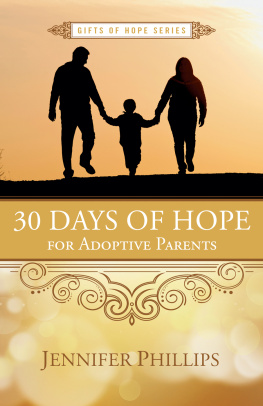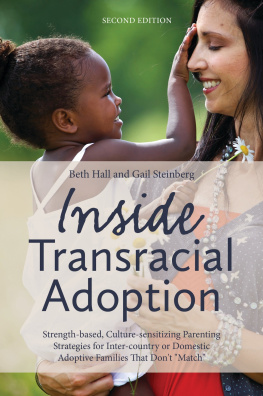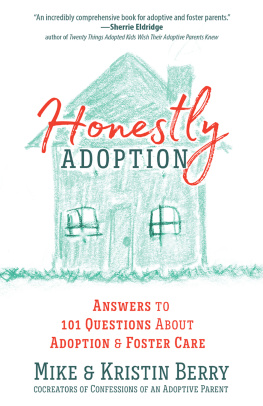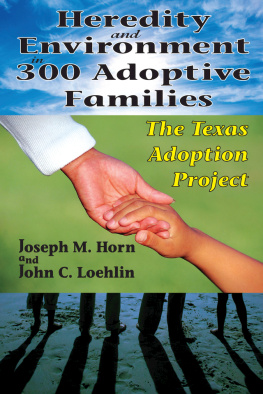

Notice
This book is intended as a reference volume only. The information given here is designed to help you make informed decisions about your health. It is not intended as a substitute for any treatment that may have been prescribed by your doctor. If you suspect that you have a medical problem, we urge you to seek competent medical help.
Mention of specific companies, organizations, or authorities in this book does not imply endorsement by the publisher, nor does mention of specific companies, organizations, or authorities imply that they endorse this book.
Internet addresses and telephone numbers given in this book were accurate at the time it went to press.
2004 by Karen J. Foli, Ph.D., and John R. Thompson, M.D.
All rights reserved. No part of this publication may be reproduced or transmitted in any form or by any means, electronic or mechanical, including photocopying, recording, or any other information storage and retrieval system, without the written permission of the publisher.
Disclaimer
In order to protect privacy and anonymity, the names of the parents, children, and family members in this bookwith the exception of the authors family and our panel of expertshave been changed.
Book design by Judith Stagnitto Abbate /Abbate Design
Library of Congress Cataloging-in-Publication Data
Foli, Karen J.
The post-adoption blues : overcoming the unforeseen challenges of adoption / Karen J. Foli and John R. Thompson.
p. cm.
This book is intended as a reference volume only. The information given here is designed to help you make informed decisions.
Includes bibliographical references and index.
ISBN 1579548660 paperback
1. AdoptionPsychological aspects. 2. Adoptive parentsPsychology. 3. Adopted childrenPsychology. 4. Parenting. I. Thompson, John R., M.D. II. Title.
HV875.F59 2004
362.734'01'9dc22
2004005949

This book is for our children:
Ben, who taught us faith;
Peter, who taught us patience; and
Annie, who taught us kindness.
contents
preface
A baby is born and the birthmother agrees that you will parent her newborn child.
A court halfway around the world signs the documents that finally allow you to bring your child home.
After a year in the court system, the judge terminates parental rights and declares that the foster child youve been caring for is legally yours.
Your 20-year-old daughter gives birth to a healthy son, which she leaves in your care.
Loving a child, any child, is an ongoing act of astounding beauty. Our emotions, our unconditional, tenacious, relentless love of a child not born to us is what sets us, the adoptive parents, apart from many others in the world. This book is about that love. During our interviews with parents, weKaren and Johnwere awed, humbled, and honored by what these parents so generously shared with us. They shared their hopes and dreams, their heartbreaks and struggles. But what they ultimately shared were their triumphs as a family. They were motivated by the thought of helping others on their journey of adoption or kinship parenting. We believe that what theyve shared truly will help. They have changed our lives, and we are forever grateful to them.
These dedicated parents offered us the chance to glimpse their personal livesflawed, human, and beautiful. The most important gifts they offered us were proven, home-tested strategies learned through trial, error, and the experience of forming a new family. Reflecting on what they had found to be the most helpful ways to cope when faced with unexpected emotions and overwhelming events, these parents shared with open hearts.
In addition to the generosity of these parents, we were moved by the commitment and intelligence of the adoption professionals we contacted to better understand the many ways in which adoption creates and changes families. Almost a dozen experts in the field of adoption from throughout the countryexperts with hands-on, day-to-day experience with adoptive and kinship familiescontributed their ideas to our work. These folks do not live in ivory towers. They help, advise, and counsel parents who need objective insight and feedback as they stabilize themselves and their families after adoption. Some of our experts are adoptive parents themselves; one is an adult adoptee. We chose these extraordinary people because they dont just think about adoption as an intellectual enterprise, they live the adoptive experience.
This book blends the experts counsel and advice with the wisdom of parents. We share with you what our experts, through years of their own research and heartfelt efforts, have found to help families. Our experts also recommended many of the Selected Readings found on page 230. These readings will help fill in parts of the adoption story that are beyond the scope of this book.
Our book is designed to do two things. The first is to explain the common issues that face most, if not all, families during the post-adoption period; and the second is to provide simple, effective help for you, the adoptive or kinship parent. We define post-adoption as the time after placement of the child in the home and onward. For our purposes, post-adoption encompasses the post-placement and post-finalization periods (see Glossary on page 226).
As authors, we speak not only from our research and study, but also from experience with both the joys and the unforeseen challenges of adoption. We are the parents of two children by birth and one child by adoption. We met our daughter for the first time in an airport, when she was carried off a plane from Kolkatta, India. That memory will stay as close to our hearts and as vivid as the births of our other children. We saw a tiny babyalmost 5 months oldin a thin pink sleeper, her small hands clinging to her escorts shirt. As she was gently jostled up the jetliners ramp on a dark, warm March night, our daughter came closer and closer to us for the first time.
That moment marked a new beginning for our daughter and our family, the symbolic birth of Annie. What we didnt know that night was that we were meeting an infant who carried the effects of an early life without consistent care, a life that had already endured so much stress. Her challenging behaviorsand more notably, our lack of preparednessled us to struggle as a family. Karen was particularly susceptible to the mass of contradictory post-adoption emotions that we address in these pages. Karen felt shame, guilt, and the fear of being judged by others. All these toxic emotions kept her, for a time, from embracing her role as Annies parent and showing what was in her heart.
After so many months of longing for this child, Karen wondered how she could be so unhappy. Shocked by her own emotions, Karen tried to deny them and silence them, to handle them on her own. But they wouldnt go away. Slowly, she began to trust her friends and her husband.
John, concerned about his wifes sadness and anxiety, felt unsure how to help. He offered Karen support and his belief that, with time, she would be able to bond with Annie. Above all else, he continued to love both his wife and his daughter unconditionally.
For Karen, the journey toward bonding with Annie was confusing and difficult. She actively sought information and found what little there was on the Internet. Suddenly, she realized she wasnt alone. There were others who had felt this way. No, it didnt mean that she didnt love Annie. One by one she was able to confront the emotional secrets that were putting distance between her and her family. As these feelings were resolved, understood, and overcome, she and Annie fell in love.
Next page







